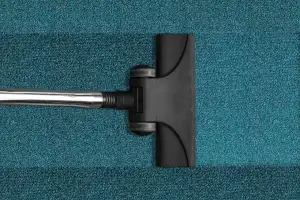Effortlessly Clean Your Keurig with Vinegar: Step-by-Step Guide for a Pristine Coffee Maker

- Gather the necessary supplies for cleaning
- Unplug and disassemble the Keurig machine
- Clean the external parts of the coffee maker
- Clean the water reservoir and lid
- Clean the K-cup holder and funnel
- Descale the Keurig using vinegar
- Rinse and reassemble the Keurig machine
- Run a cleansing brew cycle
- Final tips and precautions for maintaining a clean Keurig
Keeping your Keurig coffee maker clean is essential for maintaining its performance and ensuring that every cup of coffee tastes fresh and delicious. One of the most effective ways to clean your Keurig is by using vinegar, a natural and affordable cleaning agent. Vinegar helps remove mineral deposits, bacteria, and residue that can build up over time. In this step-by-step guide, we will walk you through the process of effortlessly cleaning your Keurig with vinegar, so you can enjoy a pristine coffee maker and a perfect cup of joe every time.
Gather the necessary supplies for cleaning
To clean your Keurig coffee maker with vinegar, you will need a few supplies. First, make sure you have white distilled vinegar on hand. This type of vinegar is highly effective in removing mineral buildup and descaling the machine. You will also need water for rinsing and a soft cloth or sponge for cleaning the external parts of the coffee maker. Additionally, gather a small brush or toothbrush to clean hard-to-reach areas like the K-cup holder and funnel. Having these supplies ready will ensure a smooth and efficient cleaning process.
Unplug and disassemble the Keurig machine
To begin cleaning your Keurig coffee maker, the first step is to unplug the machine from the power source. This is essential for safety purposes and to avoid any electrical mishaps during the cleaning process. Once unplugged, carefully disassemble the different parts of the coffee maker. This typically includes removing the water reservoir, drip tray, K-cup holder, and funnel. Refer to your Keurig's user manual for specific instructions on how to disassemble your particular model. Taking these steps will ensure that you have easy access to all areas that require cleaning and prevent any damage while doing so.
Clean the external parts of the coffee maker
To clean the external parts of your Keurig coffee maker, start by unplugging the machine and ensuring it is cool. Use a damp cloth or sponge to wipe down the exterior, removing any dust or grime. For stubborn stains, you can use a mild dish soap solution. Avoid using abrasive cleaners that may damage the surface. Pay extra attention to areas like the control panel, buttons, and drip tray. Once cleaned, dry all surfaces thoroughly before moving on to the next step. A clean exterior not only enhances the appearance of your coffee maker but also ensures a hygienic brewing environment.
Clean the water reservoir and lid
To clean the water reservoir and lid of your Keurig coffee maker, start by removing the reservoir from the machine. Empty any remaining water and discard any used K-cups. Wash the reservoir and lid with warm soapy water, using a sponge or cloth to remove any residue or buildup. Rinse thoroughly to ensure all soap is removed. If there are stubborn stains or mineral deposits, you can soak the parts in a mixture of equal parts water and vinegar for about 30 minutes before washing. Once cleaned, dry the reservoir and lid completely before reattaching them to the machine. This step will help ensure that your Keurig produces fresh-tasting coffee every time you brew.
Clean the K-cup holder and funnel
To clean the K-cup holder and funnel of your Keurig coffee maker, start by removing the K-cup holder from the machine. Rinse it under warm water to remove any residue or coffee grounds. Use a soft brush or toothbrush to gently scrub away any stubborn stains or build-up.
Next, clean the funnel by removing it from the machine and rinsing it thoroughly under warm water. If there are any clogs or blockages, use a paper clip or toothpick to carefully dislodge them. Be gentle to avoid damaging the funnel.
For a deeper clean, you can soak the K-cup holder and funnel in a mixture of warm water and mild dish soap for about 15 minutes. This will help remove any lingering oils or stains. After soaking, rinse them again under running water to ensure all soap residue is removed.
Once cleaned and rinsed, allow the K-cup holder and funnel to air dry completely before reassembling them back into your Keurig machine.
Regularly cleaning the K-cup holder and funnel is essential for maintaining optimal performance and ensuring that your coffee tastes its best every time you brew a cup.
Descale the Keurig using vinegar
To descale your Keurig coffee maker, vinegar is a highly effective and natural solution. Its acidic properties help remove mineral deposits that can build up over time and affect the machine's performance. To begin, fill the water reservoir halfway with white vinegar and the remaining half with water. Place a large mug on the drip tray to catch the liquid. Start a brew cycle without inserting a K-cup, allowing the vinegar mixture to run through the machine. Repeat this process until all of the liquid has been dispensed. The acidity in vinegar will dissolve any limescale or mineral buildup inside the Keurig, leaving it clean and ready for use.
Rinse and reassemble the Keurig machine
Once you have finished descaling your Keurig with vinegar, it's important to thoroughly rinse and reassemble the machine before using it again. Start by rinsing the water reservoir and lid under running water to remove any vinegar residue. Make sure to also rinse the K-cup holder and funnel.
Next, carefully dry all the parts with a clean cloth or paper towel. It's crucial to ensure that no moisture remains as this can lead to mold or bacteria growth.
Once everything is dry, reassemble the Keurig machine by placing the water reservoir back onto the base and securing it tightly. Insert the K-cup holder back into its position and lock it in place.
Double-check that all components are properly aligned and securely attached. This will prevent any leaks or malfunctions during brewing.
Before using your Keurig again, run a couple of cleansing brew cycles with just plain water. This will help flush out any remaining vinegar taste or odor from the system.
Remember, proper reassembly is essential for maintaining a clean and functional Keurig coffee maker. By following these steps, you can ensure that your machine is ready to brew delicious cups of coffee without any unwanted flavors or impurities.
Run a cleansing brew cycle
To ensure a thoroughly clean Keurig, it is essential to run a cleansing brew cycle. This step helps to remove any remaining vinegar residue and ensures that your coffee maker is ready for use.
To begin, fill the water reservoir with fresh water up to the maximum fill line. Place a large mug or container on the drip tray to catch the water.
Next, select the largest cup size on your Keurig machine and start the brewing process without inserting a K-cup. Allow the machine to complete the brewing cycle until all of the water has been dispensed into the mug or container.
Repeat this process two more times with fresh water to ensure that any traces of vinegar are completely flushed out of the system.
Once you have completed these three cleansing brew cycles, your Keurig machine should be free from any vinegar taste or smell. You can now enjoy a fresh and flavorful cup of coffee without any unwanted flavors.
Remember, running regular cleansing brew cycles not only ensures a clean Keurig but also helps maintain optimal performance and extends the lifespan of your coffee maker. So make it a habit to perform this simple yet effective step regularly for a pristine and enjoyable coffee experience every time.
Final tips and precautions for maintaining a clean Keurig
1. Clean your Keurig regularly: To ensure optimal performance, it is recommended to clean your Keurig at least once every three months or more frequently if you use it heavily.
2. Use filtered water: Using filtered water in your Keurig can help prevent mineral buildup and extend the lifespan of your machine. This will also result in better-tasting coffee.
3. Avoid using harsh chemicals: Stick to using vinegar or other recommended descaling solutions when cleaning your Keurig. Harsh chemicals can damage the internal components of the machine.
4. Be gentle with the parts: When cleaning, handle the various parts of your Keurig with care to avoid any damage. This includes the water reservoir, lid, K-cup holder, funnel, and external surfaces.
5. Keep the area around your Keurig clean: Wipe down any spills or drips promptly to prevent them from becoming sticky and attracting dirt or mold.
6. Store your Keurig properly: When not in use, store your Keurig in a cool and dry place to prevent dust accumulation and potential damage.
By following these final tips and precautions, you can maintain a clean and efficient Keurig coffee maker that consistently delivers delicious cups of coffee.
In conclusion, regular cleaning is essential for maintaining the optimal performance of your Keurig coffee maker. Over time, mineral deposits and residue from coffee can build up inside the machine, affecting the taste and quality of your brews. By following this step-by-step guide and using vinegar as a natural cleaning agent, you can effortlessly remove these impurities and ensure a pristine coffee maker. Remember to clean your Keurig at least once every three months to keep it running smoothly and enjoy delicious cups of coffee every time.
Published: 13. 02. 2024
Category: Home



